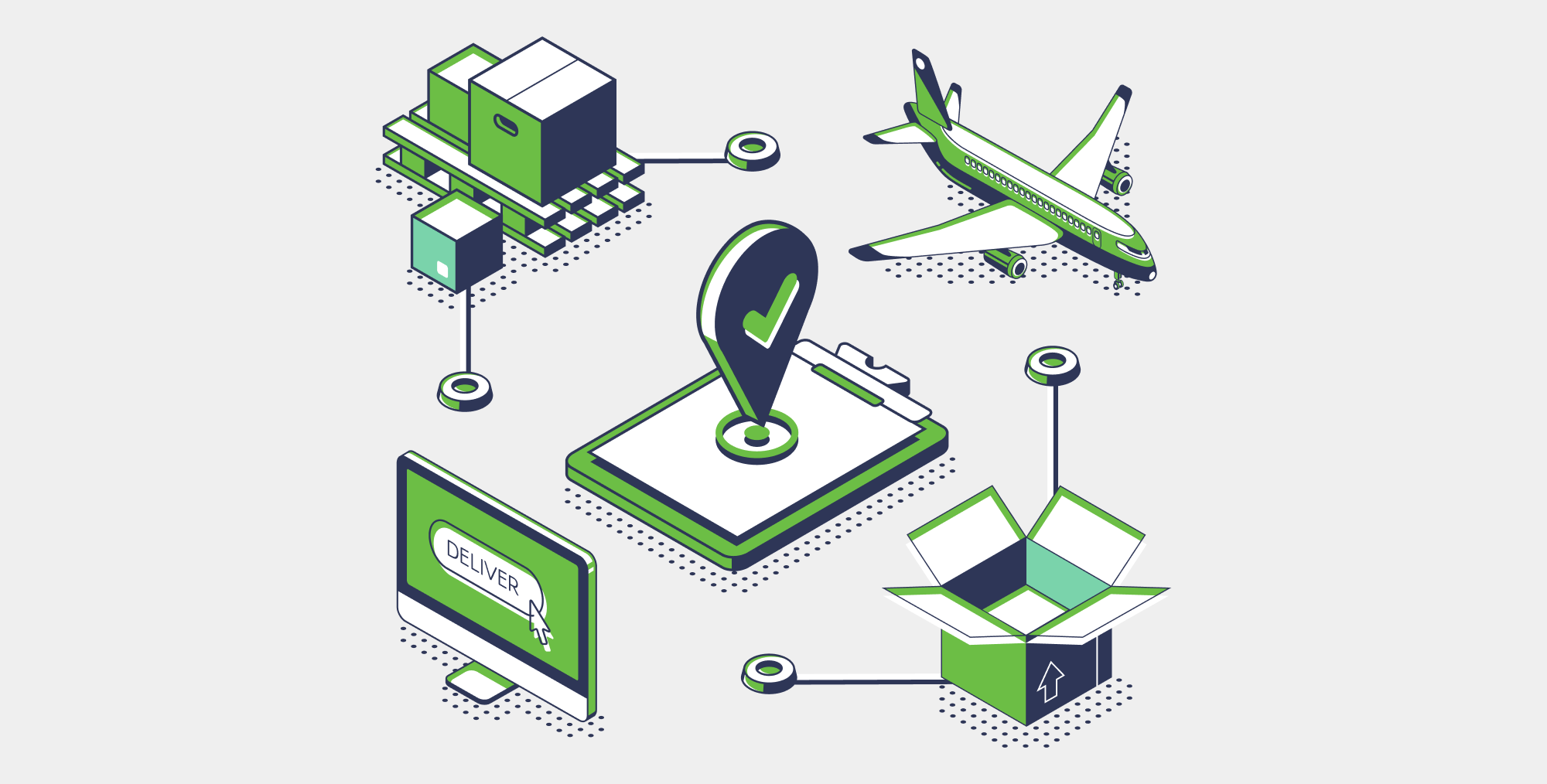Tax Compliance for Ecommerce Sellers
Optimizing tax compliance with your shopping cart or ecommerce platform
Since the landmark decision in South Dakota v. Wayfair, Inc. (June 2018), the world has become a very different and complex place for online sellers. The obligation to collect and remit sales tax is no longer controlled solely by a physical footprint. Over the past three years, 48 states plus the District of Columbia and Puerto Rico adopted economic nexus laws. Because these laws vary by state, as do specific thresholds and requirements, businesses must navigate shifting regulations as well as monitor their sales and transactions in states to determine if, and when, a threshold is reached. Today, businesses must keep up with rapidly changing state rules and regulations.
Sales tax nexus became a moving target for many online retailers. The obligation to collect and address sales tax is no longer controlled by managing a brick-and-mortar, significantly impacting those who sell online. Now, businesses are forced to keep up with rapidly changing state rules and regulations. Over the past three years, 48 states plus the District of Columbia and Puerto Rico adopted economic nexus laws. Because these laws vary by state as do specific thresholds and requirements, businesses must navigate shifting regulations as well as monitor their sales and transactions in states to determine if, and when, a threshold is reached.
In the early months of 2020, as the onslaught of changes in nexus law slowed and businesses were taking a breath, another monumental change occurred. The world was struck by a global pandemic, forcing nonessential businesses to close and many retailers to rely heavily on their digital commerce presence to continue serving and supplying their customers.
As a result, many businesses are reassessing their online sales strategy, determining if they have the right tools in place for their business and where there are opportunities for improvement. While it’s key that your ecommerce platform supports expansion when you need it and allows you to easily add new products and customers via new sales channels, another key area to consider is how your digital commerce solution supports sales tax compliance. Expansion and changes in sales tax laws require a solution that supports streamlined tax calculation, reporting, and remittance. When reevaluating your shopping cart or ecommerce platform, the following six considerations should be addressed to ensure your digital commerce solution is the optimal one for your changing business and sales tax obligations.
#1 Tax rates: tables and geolocation
In 2019, there were more than 34,000 rate and taxability updates in the U.S. and Canada, as well as more than 115,000 U.S. sales tax holiday rule updates. So, if your ecommerce platform only offers tax rate tables or if you choose to use the available rate tables for sales tax calculation, you might have a problem. Tax rate tables just can’t keep up with constantly changing rates and rules. Even if your business has access to up-to-date rate tables, they require manual intervention to be certain systems are kept up to date and are using the most recent rules and rates for sales tax. Keying in new rates isn’t only a time-consuming task, it’s error prone due to manual data entry, and can potentially create shopping cart or system errors if rate tables aren’t configured properly. Rate tables also don’t provide product taxability information. Knowing a tax rate isn’t very helpful if you don’t know whether it applies to a given product. With millions of different product and services, it’s difficult to know what sales tax rate needs to be applied at the SKU level, especially when those rates may vary from state to state.
Some sales tax calculation solutions rely on tax rate tables based on ZIP codes to determine the appropriate tax rate to charge. But ZIP codes aren’t always a valid or accurate way to assign a tax rate. In fact, ZIP codes don’t align neatly with tax jurisdictions. So, if you’re relying on ZIP codes to determine the sales tax rate to charge, you might be charging incorrect rates. There are more than 13,000 tax jurisdictions in the U.S. and addresses within the same ZIP code might be in different tax jurisdictions with different tax rates. Rate tables tend to show the highest possible tax rate for a given ZIP code, which can lead to a competitive disadvantage and possibly lost sales if you’re overcharging customers because of the wrong tax rate. In order to be sure you’re charging the appropriate rate, you need rooftop-level accuracy based on geographic location to calculate sales tax with precision.
Recommendation: Choose an ecommerce or online shopping cart solution that allows you to select a sales tax solution to automate sales tax calculation. When selecting a sales tax calculation platform, look for a cloud solution that provides updates quickly and efficiently as rates change, automatically within the system. Product taxability should be included so you can set product tax codes, enabling you and your customers to feel confident that your products are taxed at the correct rate. Finally, mapping tax jurisdictions to a geographical location — geolocation — is a better way to ensure you’re charging the right rate for the tax jurisdiction.
#2 Product taxability
As the reach of your business expands, you’ll quickly realize how greatly states vary in how they approach taxability. Some common areas where product taxability can trip up a business, if not handled correctly, are shipping and handling (including drop shipping), exempt sales, and adding new products. Something that may seem simple can become an unexpected challenge. For example, tax for shipping and handling can vary from state to state. Currently, more than 25 states plus the District of Columbia consider charging shipping that’s part of an order a taxable activity, regardless of whether sales tax is part of the price. However, some taxable shipping charges may be recharacterized as nontaxable if all the goods sold are nontaxable or exempt — for example when an item is intended for resale.
Using a drop shipper or providing drop-shipping services can add even more complexity when determining what’s taxable and what isn’t. Keeping track of shipping and handling policies across states can be time-consuming and if handled incorrectly, can cost you money.
Recommendation: Ensure your sales tax solution identifies the correct rates to apply to shipping and handling costs wherever you have sales. Enabling your shopping cart to accept and track exempt sales can increase your customer reach and grow your business. As you add new products and expand existing product lines, your ecommerce platform should enable additions to your site quickly and easily, without the need for you to spend valuable time researching product taxability and wondering if you’re applying the right rate for all jurisdictions where you have sales.
#3 Selling across state and international lines
If you’re selling into multiple states, you’re likely experiencing the complexity of varying tax rates for products and services. Thanks to the Wayfair ruling, the likelihood that you have an obligation to collect sales tax in more states is greater than ever. Economic nexus laws vary by state and each state has a different threshold: Some include sales and transactions, while others just include one or the other. For example, if you’re selling online into New York, you’re required to register, collect, and remit sales tax once you reach $500,000 in annual sales AND 100 transactions. In contrast, if you’re selling next door into Pennsylvania, once you hit $100,000 in annual sales ONLY, you’ve got an economic nexus obligation. In addition, transactions for tax-exempt entities like schools, government, or charitable organizations can also count toward thresholds, but it varies state to state.
And if you’re selling internationally, there are even more factors to take into consideration. International sales involve complex item classification, duties, and tariffs. Getting these wrong is a recipe for customer dissatisfaction due to delivery delays or charging incorrect customs duties or import taxes. Does your shopping cart and sales tax solution support this type of expansion?
Recommendation: For businesses looking to take sales to the next level, it’s important that your sales tax solution includes tools to monitor and track thresholds across all states you sell into. And when your sales meet a new threshold, you are prepared to register and collect sales tax.
There are several steps to consider when getting set up to collect and remit in a new tax jurisdiction or when looking to expand sales internationally. Your sales tax solution should provide tools and resources to help you get up and running quickly and efficiently so sales tax compliance doesn’t slow your business down.
#4 Managing exempt sales
With the recent rise in online sales, your business may be attracting new customers that are exempt from paying sales tax. Or, if you’ve traditionally functioned as part of a supply chain selling to other manufacturers or distributors, you may be selling online for the first time and need to account for tax-exempt sales. Many ecommerce platforms allow a customer to identify a transaction as taxable or not taxable during checkout, but that may be the extent of the functionality. If a customer chooses not taxable, there may be no efficient way to capture the required information or collect an exemption certificate digitally. Many times, this challenge leads to one of a few different scenarios.
The first is the customer needs to contact the seller directly to provide their information and arrange to submit the appropriate paperwork before completing the sale. In this situation, you risk cart abandonment and a poor customer experience.
The second scenario is the customer chooses not taxable and you allow them to complete the transaction with the intent of obtaining the exemption certificate in the future. Enabling a customer to be exempt from paying sales tax without collecting and verifying a valid exemption certificate opens your business up to risk.
Finally, some customers may not realize they’ve been charged sales tax or can’t see a way to avoid the additional cost, assuming it can be easily refunded. This is a poor experience and can result in having to issue a credit and rebill the customer, thus complicating your financial records and creating more manual work and headaches for your accounting team. If you fail to collect the appropriate documentation and validate it, your business shoulders the responsibility and risks non-compliance, as well as penalties and fines should you be audited.
Recommendation: Research what options your ecommerce platform has for managing exempt sales. Some offer add-on solutions or you can purchase an exemption certificate management solution that easily integrates with your ecommerce platform. These solutions allow you to collect, validate, and manage exempt certificates digitally, without slowing down the purchasing process.
#5 Selling through multiple channels
If you’re selling via more than one platform, there are a few considerations you should keep in mind, including how you manage marketplace sales and if your ecommerce platform consolidates information from all sales channels to support timely and precise sales tax returns and remittance. Many businesses sell via online marketplaces such as Amazon, Etsy, or eBay to help bolster sales and reach new customer markets. While selling via a marketplace can help you tap into a new customer base, the additional sales tax obligations that go along with selling through these channels can be difficult to understand. Many states have recently introduced marketplace facilitator laws, making sales tax compliance even more difficult for marketplace sellers. Selling through marketplaces opens your business up to new activities that can trigger nexus: storing inventory in a warehouse (even if the warehouse is not owned by you), and economic activity. Both activities can create a nexus connection, requiring you to register, collect, and remit sales tax on sales made in additional tax jurisdictions. Knowing you have an obligation is the first step; many marketplace facilitator laws vary when it comes to who’s responsible for collecting and remitting sales tax on transactions made through the marketplace. More than 40 states plus the District of Columbia have adopted marketplace facilitator laws, but as with many facets of sales tax, those laws and requirements can vary drastically by state in their application.
It’s also critical to pay close attention to whether your sales tax solution connects your sales data housed within the platform to data from all other channels — including marketplaces or social platforms — so you can be confident the information you’re reporting to tax authorities is accurate and includes sales from all channels. If your sales tax solution lacks the ability to consolidate data from across multiple sales channels or platforms, you may be spending unnecessary time and energy every month manually calculating and reconciling sales tax data prior to filing your returns. And you could be unaware of a new sales tax obligation because you’re under-calculating sales in a specific tax jurisdiction.
Recommendation: Look for a tax compliance solution that helps you manage your sales across channels and platforms, and consolidate sales from your POS, social, or marketplace channels. It’s key to understand where you may have new sales tax obligations and your responsibilities for sales made through marketplaces.
#6 Product returns
With the growth of online sales, one facet of the customer experience that’s sometimes forgotten is how to handle product returns. Whether purchases are made in store or online, returns must be considered and planned for as part of your end-to-end sales cycle.
The ability to process product returns accurately is essential. This includes the processing and refunding the correct amount of sales tax as well as correctly amending your sales tax returns. If you’re using one system for sales and another for returns filing and remittance — or filing manually — you could be open to extra headaches and paperwork to ensure customers are credited back the correct amount of sales tax paid and that your sales tax returns and remittance filed is accurate.
Recommendation: Assess a sales tax solution to verify that it supports a high level of accuracy in calculating and applying sales tax rates to returns transactions. Having one solution that performs tax calculation in conjunction with the filing and remittance of returns supports accuracy across both functions and your overall tax compliance.
Optimize to support compliance
Your business continues to change. Whether it’s due to an unforeseen demand for your products and services, a planned expansion into new markets, or the fact that state and local jurisdictions continue to implement new laws and requirements for businesses selling online, change requires you to revisit and refine your ecommerce solution to validate that it’s still appropriate for your needs. Tax compliance is a critical component of your online sales and customer experience.
How Avalara can help
As your sales tax obligations, requirements, and processes change, you have to be confident your tax compliance solution can keep up. Choose a tax automation solution that supports your success now and addresses these six important considerations as your business needs change or expand:
Tax rates
Avalara AvaTax uses geolocation, not ZIP codes, to determine appropriate sales tax rates, so you charge customers the right rates for their purchases. Sales tax rates vary across jurisdictions, counties, states, and countries, and our cloud-based solution applies changes to rates automatically so you can feel confident you’re using the most up-to-date rates, including product-specific tax rates, sales tax holidays, as well as shipping and handling rules.
Product taxability
Millions of different product and service rates vary from state to state. AvaTax helps you determine what sales tax rate needs to be applied at the SKU level.
Selling across state and international lines
To make sure you’re in compliance with economic nexus laws, AvaTax monitors your business activities and alerts you when you’re about to establish tax obligations in new jurisdictions. For cross-border sales, AvaTax Cross-Border calculates customs duties and import taxes at the point of sale, creating a transparent and frictionless online shopping experience for international customers.
Managing exempt sales
Bring on new customers efficiently, even when they’re exempt from paying sales tax. Avalara CertCapture helps you automate the exemption certificate management process by collecting, validating, storing, and renewing compliance documents digitally — without slowing down the purchase process or disrupting the checkout experience.
Consolidating sales from multiple channels
Avalara solutions come ready to connect to today’s most widely used ERP, accounting, ecommerce, and other business applications, enabling you to connect all sales channels to a single platform.
Managing product returns
Avalara Returns pulls your sales data directly from AvaTax to aggregate all data so you’re able to confidently prepare, file, and remit your sales tax returns, and even includes any product returns.





